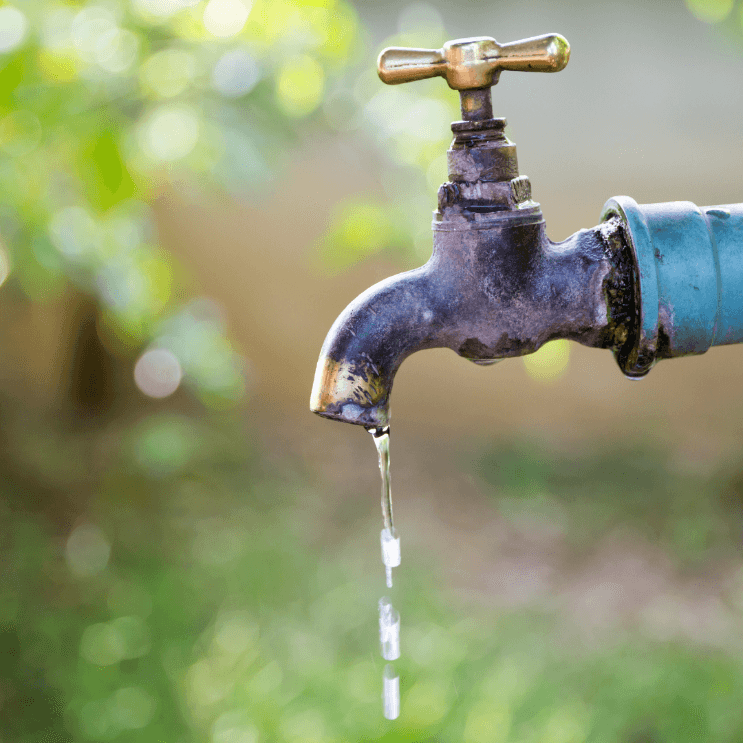
An essential element of any household’s plumbing system is the outdoor faucet, called a hose bib or spigot. This fixture is a convenient water access point for gardening, car washing, and other outdoor activities. While outdoor faucets are crucial in daily tasks, they are not immune to issues. Among the common challenges these fixtures face, leaks stand out as a primary concern, which can result in water wastage, escalated utility expenses, and even damage to the property.
Therefore, understanding the causes of these leaks, adopting preventive measures, and knowing how to handle repairs are vital to maintaining an efficient outdoor faucet system. This blog will explore the common causes of outdoor faucet leaks, methods to prevent them, and steps to repair them effectively.
1. Causes of Outdoor Faucet Leaks
Understanding the reasons behind outdoor faucet leaks is crucial in preventing them from occurring. Here are some common causes:
a) Wear and Tear: Outdoor faucets are subject to continuous exposure to weather conditions, causing gradual deterioration over the years. O-rings and washers inside the faucet handle can degrade, causing leaks around the handle.
b) Freezing Temperatures: In colder climates, water left inside the outdoor faucet during winter can freeze and expand, leading to cracks in the pipe or fittings. As temperatures increase and ice thaws, it can result in the emergence of leaks.
c) Loose Connections: If the connections between the faucet and the water supply line are loose, water may seep through the gaps, causing leaks.
d) Corrosion: Corrosion can occur on the faucet’s internal components or the connecting pipes, weakening the structure and leading to leaks.
e) High Water Pressure: Excessive water pressure can stress the faucet’s seals and cause leaks.
f) Improper Installation: Incorrect outdoor faucet installation can result in misalignment or inadequate sealing, leading to leaks.
2. Preventing Outdoor Faucet Leaks
Taking preventive measures can extend the life of your outdoor faucet and reduce the likelihood of leaks. Here’s what you can do:
a) Frost-Proof Faucets: It is advisable to opt for frost-proof faucets, alternatively referred to as freeze-proof or anti-siphon faucets. These faucets have a long stem that extends into the home, preventing water from sitting inside the exposed portion of the pipe and freezing during winter.
b) Insulate Exposed Pipes: If you have standard outdoor faucets, insulate the exposed pipes with foam covers during the colder months to protect them from freezing.
c) Disconnect Hoses: Before winter arrives, disconnect and drain all hoses connected to the outdoor faucet to avoid clogged drains. Storing hoses indoors during winter prevents water from freezing and damaging the faucet.
d) Monitor Water Pressure: Adding a pressure regulator to your home’s water supply can effectively manage and control the incoming water pressure. Maintaining optimal water pressure can prevent unnecessary stress on the faucet and reduce the risk of leaks.
e) Regular Maintenance: Periodically inspect your outdoor faucet for signs of wear and tear. Timely replacement of worn-out washers and O-rings is essential in preventing potential leaks.
3. Repairing Outdoor Faucet Leaks
If you notice a leak in your outdoor faucet, it’s essential to address it promptly to avoid further damage. Below is a detailed, sequential manual addressing typical leaks in outdoor faucets.:
a) Turn Off the Water Supply: Before commencing any repair tasks, turning off the water supply to the outdoor faucet is essential. Locate the shut-off valve inside your residence and close it to halt the water flow.
b) Remove the Handle: Utilize a screwdriver or adjustable wrench to detach the handle of the outdoor faucet, allowing you access to its internal components.
c) Inspect Washers and O-rings: Examine the condition of the washers and O-rings located within the faucet handle. If you observe signs of wear or damage, replace them with new ones of the same size.
d) Tighten Connections: Conduct a comprehensive analysis of the relationship between the faucet and the water supply line. If they are loose, use a wrench to tighten them carefully.
e) Check for Cracks or Corrosion: Examine the faucet and connecting pipes for cracks or signs of corrosion. If you spot any, you may need to replace the affected parts.
f) Replace the Faucet: If the leak persists after attempting repairs, it might be best to replace the entire outdoor faucet. Consider upgrading to a frost-proof faucet for added protection against future leaks.
4. Use a Faucet Cover in Winter:
In the winter season, a faucet cover is advisable to protect against freezing temperatures for your outdoor faucet. Faucet covers are cost-effective and simple to install. They provide an extra layer of insulation and shield the faucet from cold winds and icy weather, reducing the risk of cracks and leaks.
5. Regularly Inspect for Leaks:
Make it a habit to inspect your outdoor faucet regularly, especially after the winter season. Be vigilant for any indications of leaks, such as water pooling around the faucet or a continuous drip. Detecting leaks early allows you to address the issue before it worsens, saving you from potential water damage and costly repairs.
6. Seek Professional Help if Needed:
While some outdoor faucet leaks can be fixed with DIY repairs, there may be instances where you encounter more complex issues or are unsure about the cause of the leak. If you encounter such situations, do not hesitate to seek help from a licensed plumber.
A qualified plumber can accurately diagnose the problem and perform the necessary repairs, ensuring your outdoor faucet functions flawlessly.

Conclusion
Ensuring proper outdoor faucet maintenance and actively preventing leaks are crucial factors for maintaining the efficiency of your home’s plumbing system. By implementing preventive measures such as using frost-proof faucets, disconnecting hoses in winter, and monitoring water pressure, you can significantly reduce the chances of outdoor faucet leaks. Regular maintenance, including inspecting washers, O-rings, and connections, will help catch and address leaks early on. Remember to use a faucet cover during the winter season to protect the faucet from freezing temperatures.
In case of a leak, attempt DIY repairs by turning off the water supply, checking for worn-out components, and tightening loose connections. Nonetheless, if encountering more intricate issues or feeling uncertain about the repairs, do not hesitate to seek the assistance of a professional plumber.
By adopting these practices, you can ensure that your outdoor faucet remains in excellent condition, providing convenient access to water for all your outdoor activities without any unwanted leaks. A well-maintained outdoor faucet will save water and money and contribute to a sustainable and eco-friendly household.
James Anderson
Related posts
Stay connected
- How LoveOn Chat Is Becoming the Most Versatile AI Companion for Digital UsersThe internet keeps shifting toward hyper-personal interaction, and AI companions are at the center of this shift. What used to be simple chatbots are now evolving into emotionally aware, adaptive, and multi-functional digital partners. Among the new generation of platforms, LoveOn Chat is becoming one... The post How LoveOn Chat Is Becoming the Most Versatile […]
